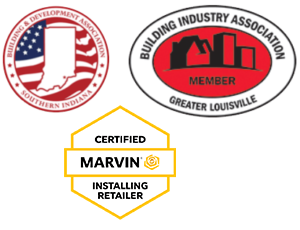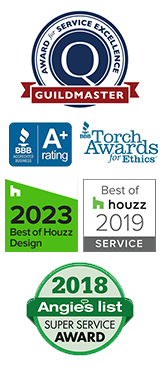Icy Windows and Doors: The Cobbler’s Children Need New Shoes
We’ve all heard the old adage about the cobbler who is so busy providing shoes for everyone in the town that his own children do not have adequate footwear. We seem to have a cobbler in our midst, Laurie Scarborough, our co-owner. This is the story of her older windows and door.
Written Sunday, New Year’s Eve, temperature 16°
Like you, my husband Kevin and I are weathering this icy-cold blast this freezing New Year’s Eve in Kentuckiana. Today, our 1960s-built home turned up some interesting problems before we were out of our pajamas.
In the spirit of keeping this post to windows and doors, I won’t mention the near miss in our laundry room, and the almost frozen pipe. I know many have experienced those in the last week. The real reason for this message is to share the problems we noticed with the older windows and doors in our home. We hope that it helps those of you with similar issues.
 It might be time to replace this huge window.
It might be time to replace this huge window.
We have been updating our home over the last few years and have one more window to replace. It’s an architectural element on the front of the house — a huge 14’ x 12’ bow window. Bow windows are designed to create space by projecting beyond the exterior wall in an arch. It has been the topic of many conversations both at home and in the office — how to replace it, with what will it be replaced, and the proverbial ‘when.’ We have caulked, painted and babied the window for as long as possible. The real impact of this wall-length window to our heating bill and physical comfort has become very evident during this cold snap.
 The window is single-pane glass. It’s been so cold this week that the internal humidity is freezing on the inside of the window. Ultimately this moisture causes the paint, glazing, and wood to deteriorate. This means wood rot! With wood rot you generally experience drafts and, if the rot is extensive, a strong wind could blow the glass out.
The window is single-pane glass. It’s been so cold this week that the internal humidity is freezing on the inside of the window. Ultimately this moisture causes the paint, glazing, and wood to deteriorate. This means wood rot! With wood rot you generally experience drafts and, if the rot is extensive, a strong wind could blow the glass out. 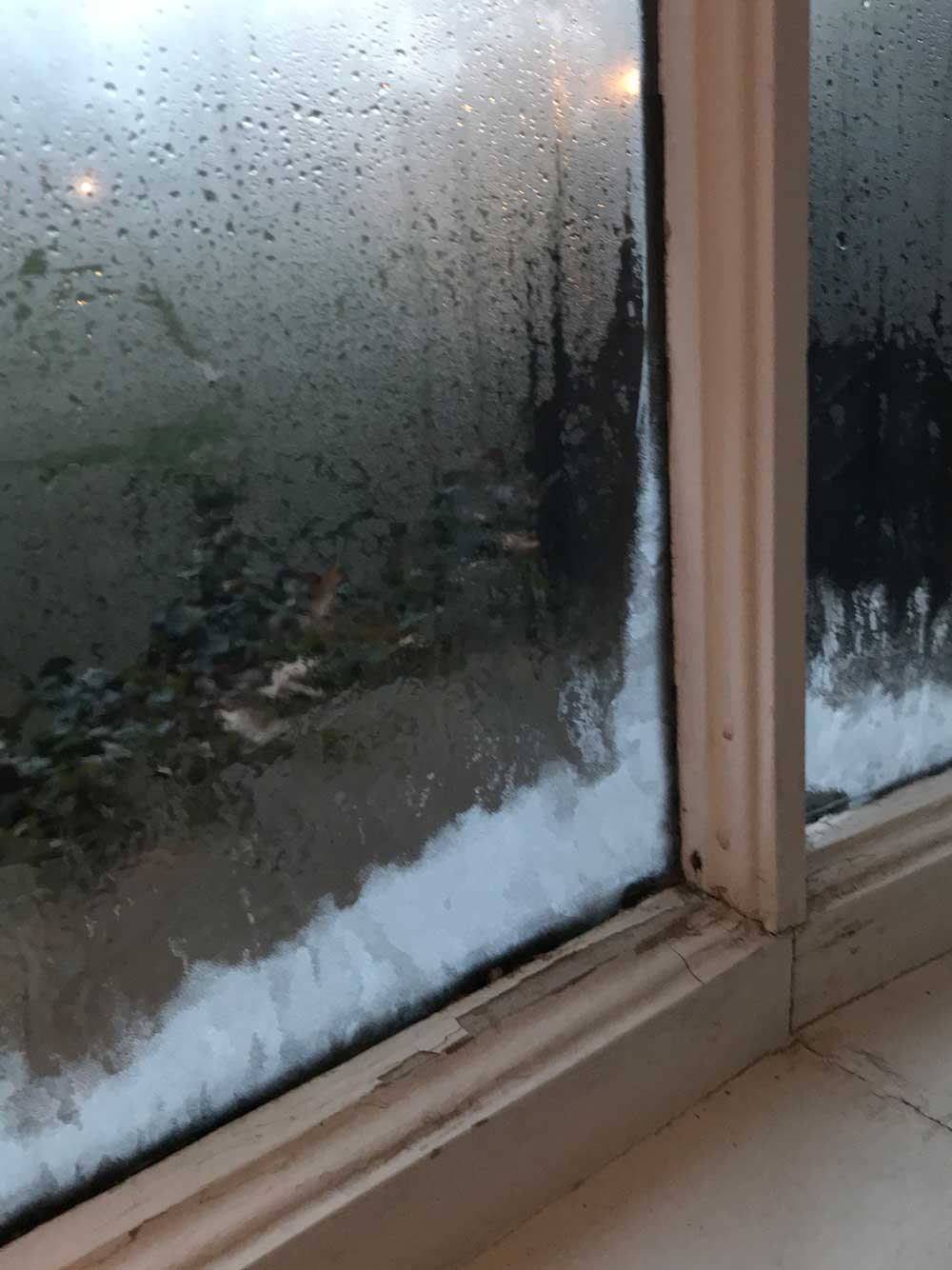
If you see problems like these pictures, it’s time to have your windows replaced.
TIP from this local window and door dealer: You do not have to replace all your windows at the same time. We have replaced our windows and doors over the course of many years. You can too.
Wait – the door too?
Unfortunately, this window is not the only issue that presented itself with the cold. Our front door is 30+ years old. For the first time we discovered ice on our threshold (at the bottom of the door.) 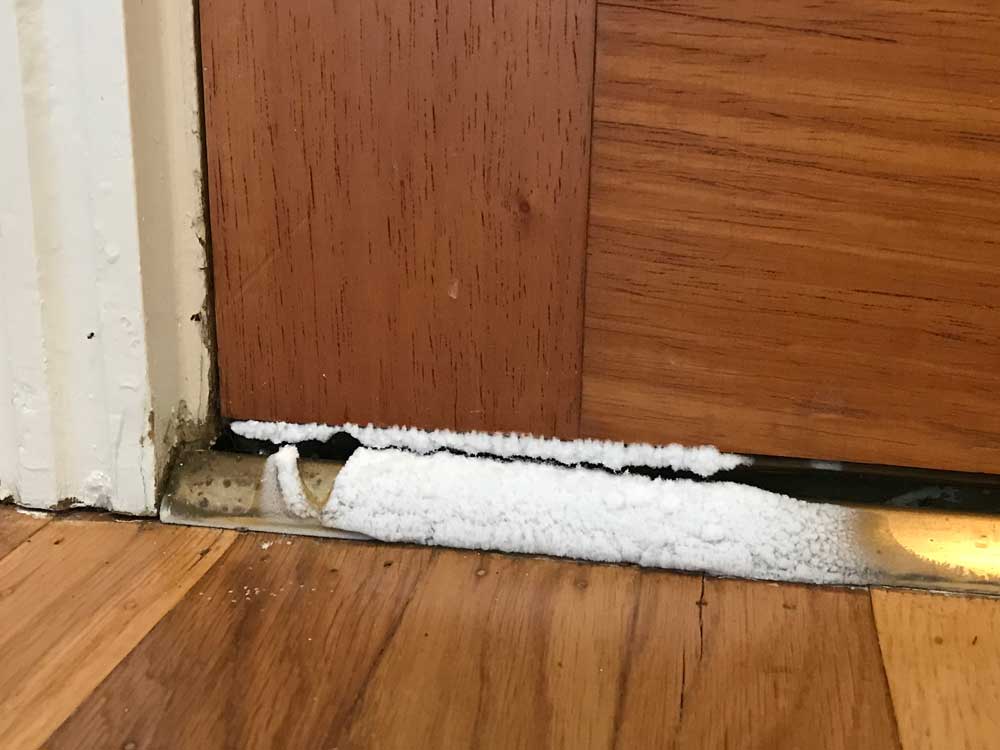
The threshold is brass and the weather stripping on the bottom of the door is also metal. Although we don’t feel a draft, the metal conducts the freezing temperature. This, combined with the internal humidity, causes icing on the interior section of the threshold. In addition, we have seal failure in the decorative glass. Ice buildup can be seen there too.
A new door system with a threshold and “compression” weather stripping, made with composite and synthetic materials, will quickly solve these problems. Today’s doors are very energy efficient.
With all of these developments, we have been working on plans to update the front of our home — both the bow window and the front entry door.
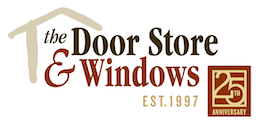
 It might be time to replace this huge window.
It might be time to replace this huge window.

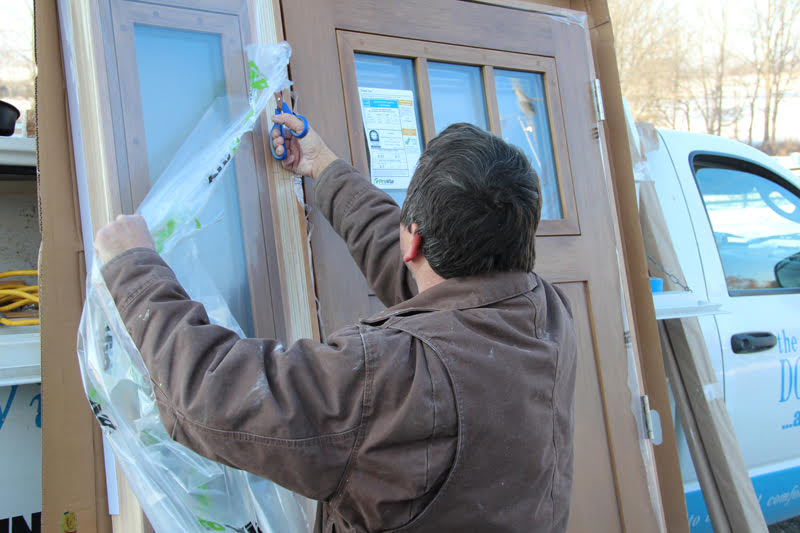

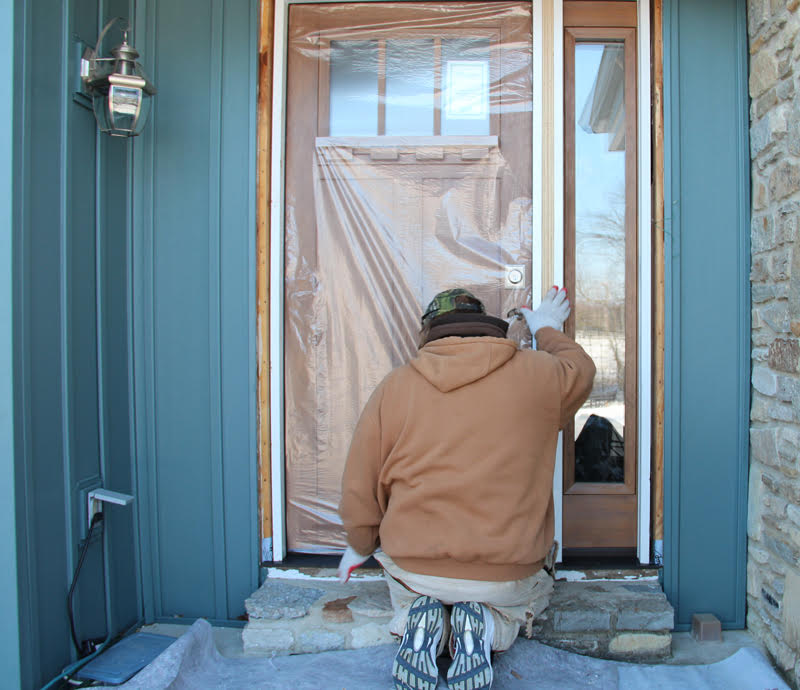
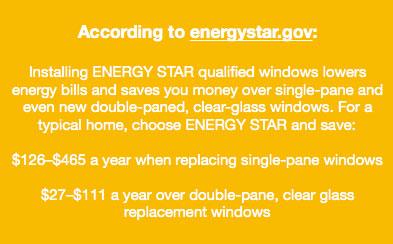
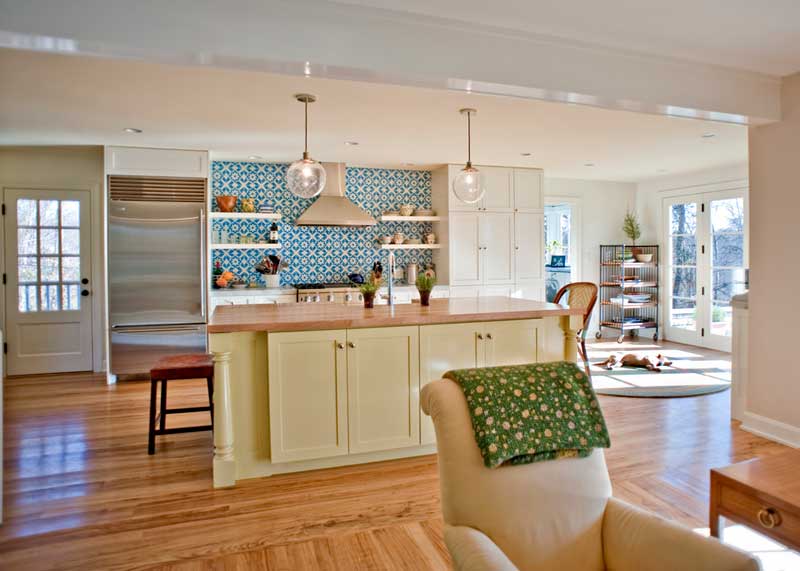
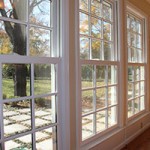
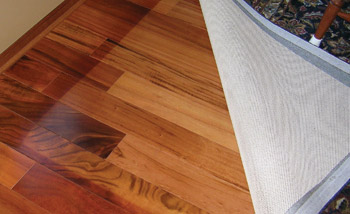
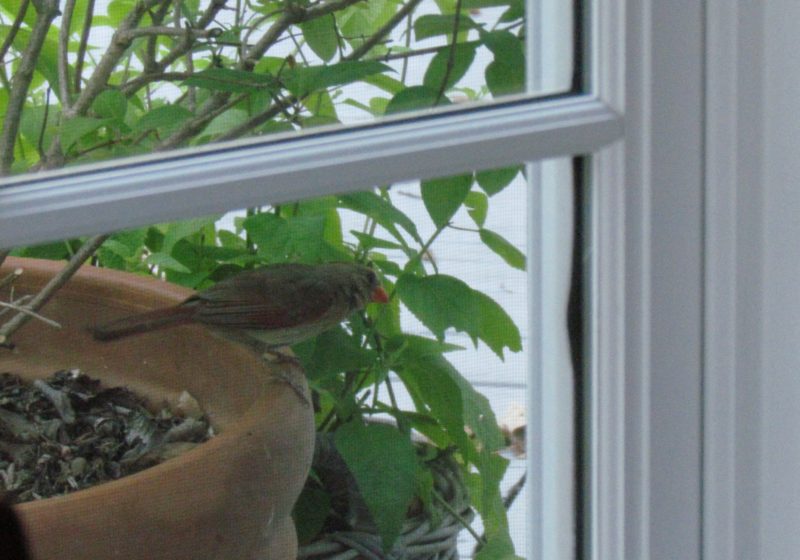
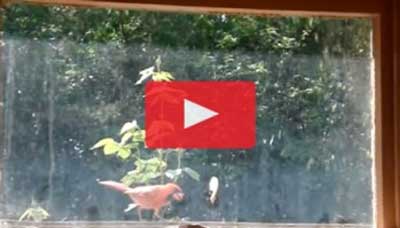



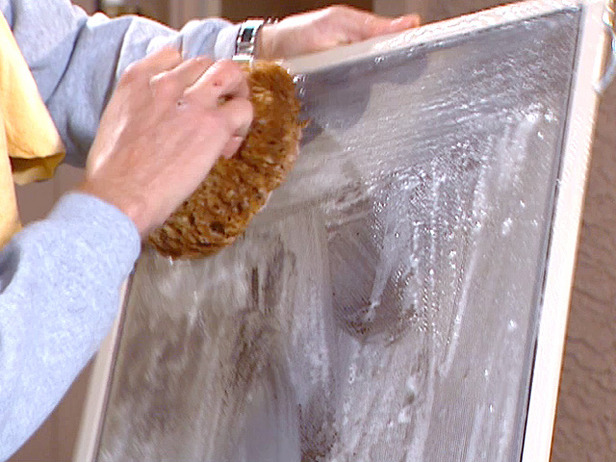
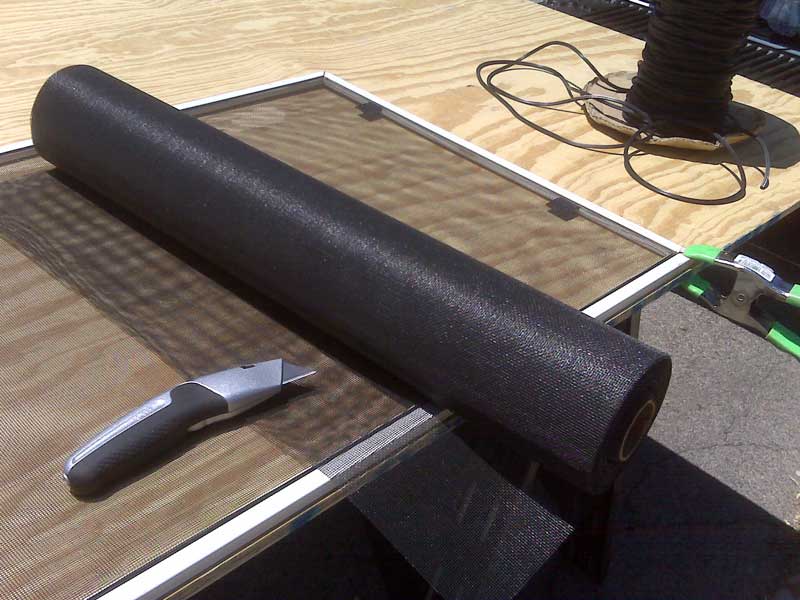


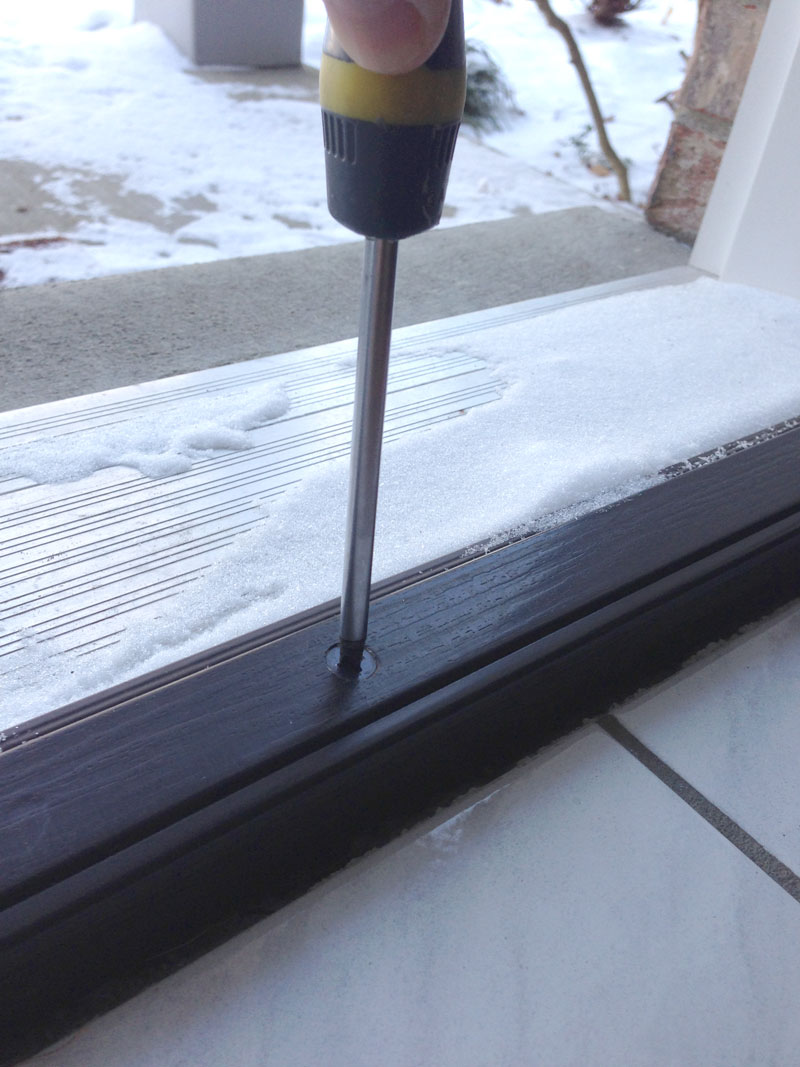
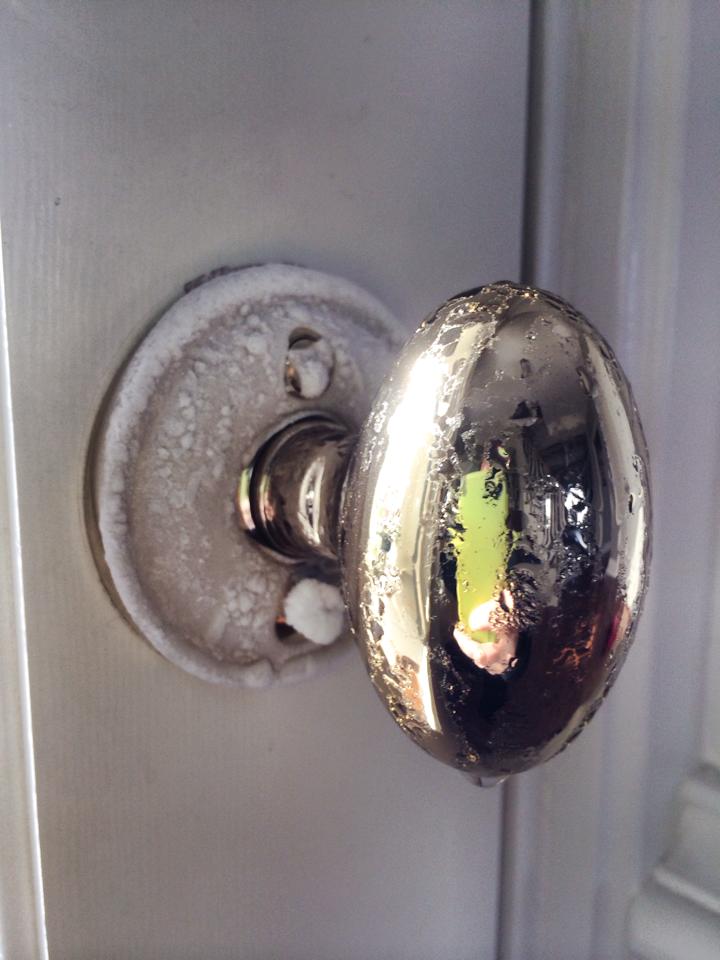
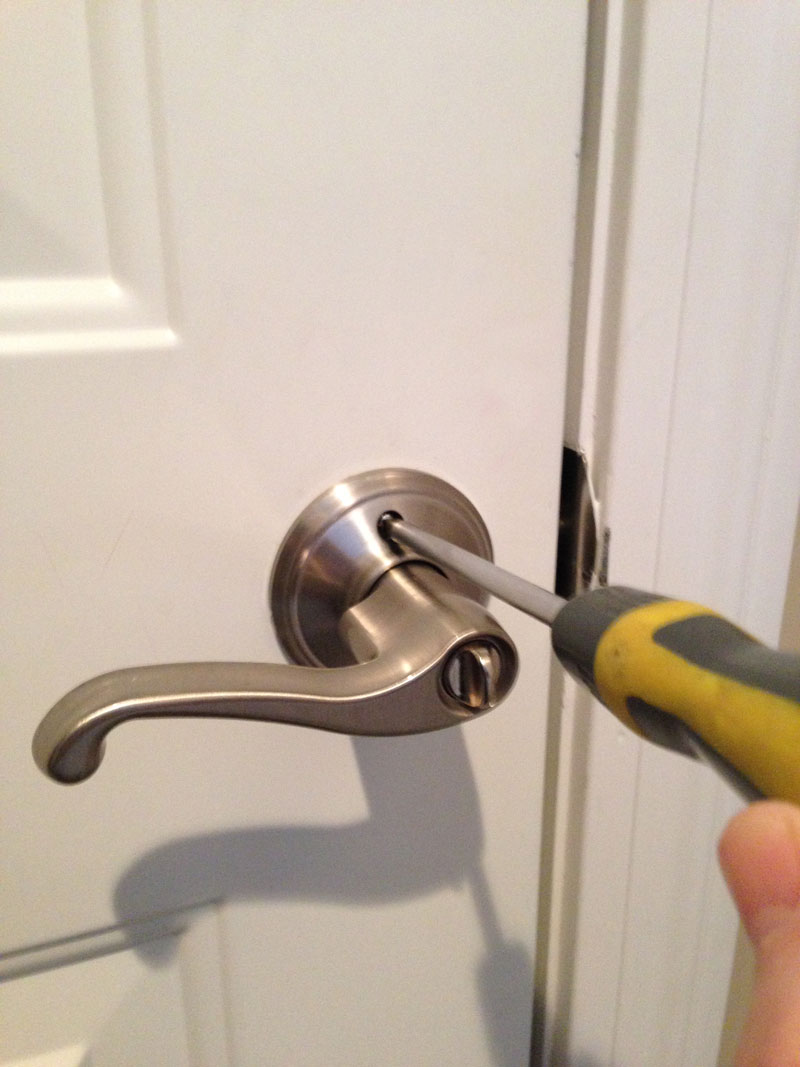

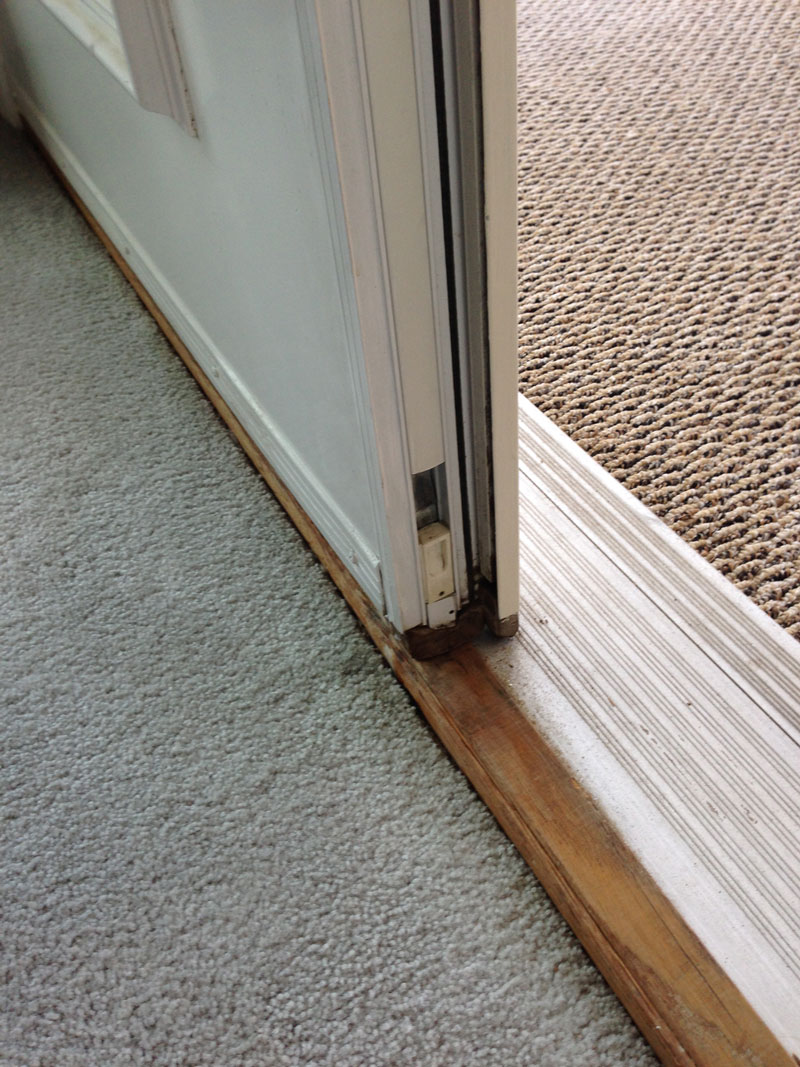

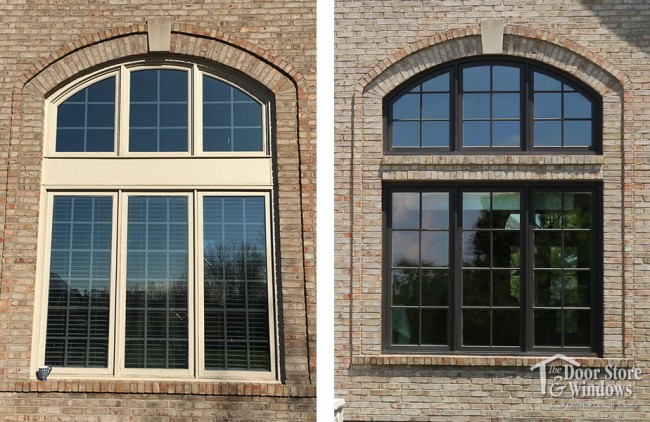
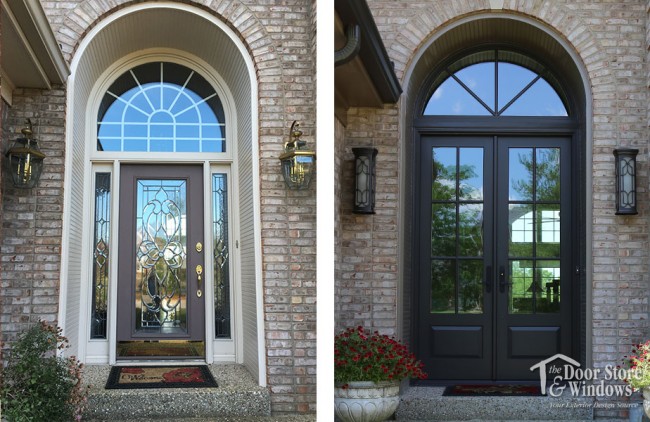

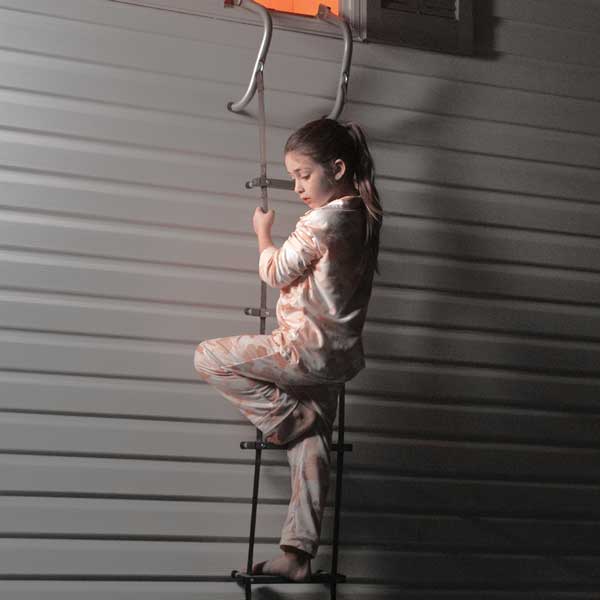

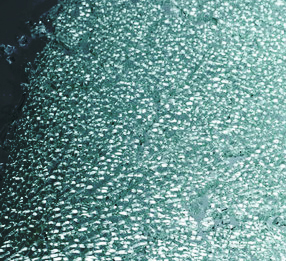
 Opening Control Devices
Opening Control Devices Kentuckiana is our community! We’re locally-owned and operated, not a franchise, so you get attentive, local service.
Kentuckiana is our community! We’re locally-owned and operated, not a franchise, so you get attentive, local service.